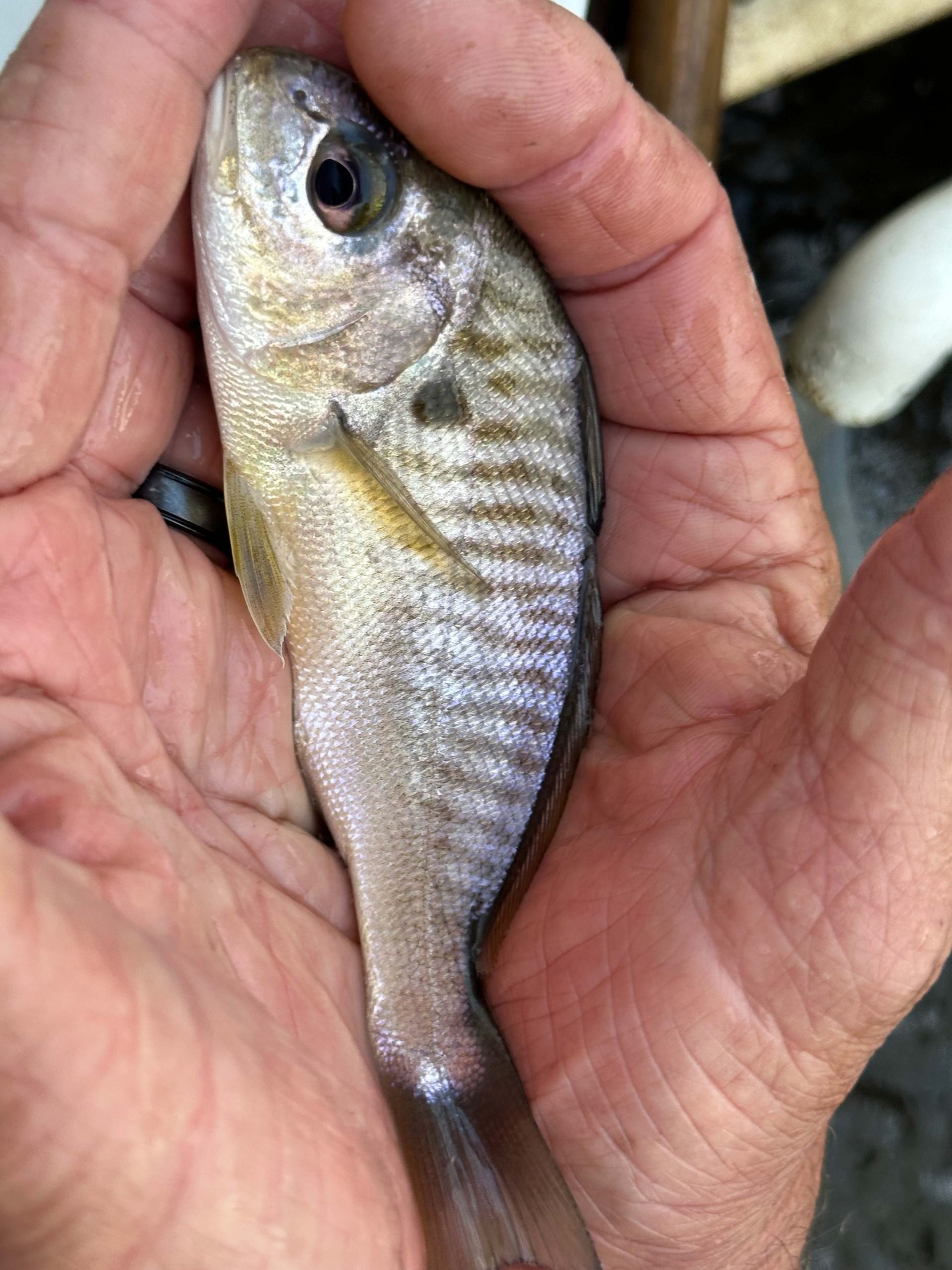
A top-ranked bait and it’s many uses for Northeast fishing.
Live spots, leiostomus xanthurus, saw their value escalate in the Northeast based on a resurgent striped bass fishery that steadily gained steam in the late 1990s. Always available below the Mason Dixon Line, select tackle shops began importing them in bulk and selling them for as much as $3 each. Although that may seem pricey for single bait, a spot’s catching ability and the plethora of stripers that can’t resist them can make the most pedestrian fishermen highly successful. Dragged around structure and depth changes on a bare hook; the deadly baits prove irresistible when presented properly. Any “rip” in any estuary or nearshore shoal is a prime place to present a spot. Anglers can see the change in depth on the sounder and observe the turbulent water of a rip on the surface. The Cape May Rips, in their glory days, was lock and load for this type of fishing. Furthermore, anglers that send a spot down under and along bridge structure can expect bites.
As the years progressed and the spot’s usage expanded in range and exposure, striped bass anglers began seeing additional catches taking place while fishing with spots. Fluke, and enormous ones at that, became such a regular bycatch of striper fishermen that anglers began using spots specifically for summer flounder. Keepers and doormats alike absolutely pulverize a live spot. Small spots will catch throwbacks amongst lengthier fluke, and oversized spots might swim all day without a strike. It’s the medium-sized spots that are my favorite and fit the bill for keepers and ‘mats. On a personal note, I did target and capture my personal best fluke of 15.2 pounds on an oversized model, so fishing large ones can work out for sure! Like striper fishing, live spots should be deployed on a naked hook that matches the size of the bait appropriately. The bait should be hooked through the chin so it swims naturally.
Because tackle shops made certain their tanks had an ample supply of the spots for stripers, offshore captains began carrying them to the tuna grounds. And boy, did they produce! Chunking anglers regularly send a live spot out under a balloon, whether they are ladling butters or dangling squids. Despite not being identical to what’s being sent into the slick, yellowfin, and bluefin tuna will gladly eat the hooked spot. In any and all scenarios, a live spot may make the difference in putting tuna on ice or bringing home the skunk. Considering live spots are one of the most durable live baits around, they can take the punishment of sloshing around in the bait tank on the trek over the ocean swells.
Although fishermen have always been aware that spots migrate into northern waters during the summer months, most didn’t realize their bait value prior to the last 30 years. So now, when spots infiltrate the waters, fishermen specifically target them in order to fill the bait pen. Sabiki rigs baited with small bits of bloodworm work best. Small morsels of bloodworms rank as numero uno for drawing bites, which are nothing more than little nibbles. After bloodworms, grass shrimp, bits of clam, squid, or shrimp tethered to the Sabiki hooks catch well. It’s essential to keep the bait small, perhaps the size of a trout magnet (freshwater bait) or even smaller. In addition to the natural baits, fishermen can add small pieces of Berkley Gulp nightcrawler or redworm to the hooks. Often, the synthetic offerings will outduel the natural ones. Anglers not using Sabiki’s can tie up a rig similar to a stocked trout design with a small hook or two. Fifteen-pound test monofilament is the ticket.
Cast-netting spots when they gang up is a fast and efficient way to score. In the estuaries, anglers can let their nets sink to the bottom in order to catch. But a word of caution: the net will grab whatever is in the mud; therefore, it’s best to know if there are rocks or obstructions on the bottom one is targeting. The beachfront is another frontier to load up. Spots run in and out of the rising surf where the toddlers play. This isn’t a yearly guarantee in the Northeast since sometimes they don’t show in numbers high enough to make this method viable, but when they do explode on the scene, this is a terrific method. What’s more, surf anglers targeting kingfish will cash in on beach spots. It never hurts to ask if they plan on discarding them. Offering to chip in on the bloodworms may get those anglers to share their spots.
Southern anglers have always valued spots for their food value. Pier fishermen line up side-by-side as if they were on a party boat when they are running heavily. There is a singular goal of catching enough for a full-on fish fry. I’ve eaten them and can attest to the quality of the meat, but the bones deter me. Indeed, most fishermen of the Northeast will pass on the cook-out but will gladly get after spots so they can help us catch the stripers, fluke, and tuna we really covet.



